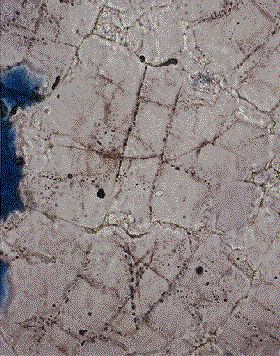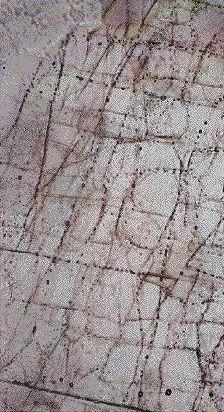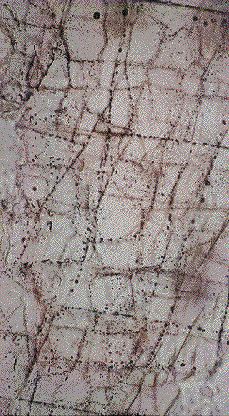
(Experiments carried out by Moahsine Zahid and Bas den Brok.)
Creep experiments are carried out to study the uniaxial deformation
behaviour of dense sodium chlorate aggregates with water in pores and
grain boundaries. The aggregates were prepared by compaction of lose
aggregates in the pressure solution deformation field (see previous page)
and then axially loaded.
Aim of the experiments is to study the deformation features in wet rock analogues that are loaded below their plastic limit, but within the pressure solution deformation field. The mechanical data and study of the microstructures shows, that after some initial low strain rate deformation, probably by pressure solution and some associated grain sliding, deformation takes place by (rate dependent) cataclasis.

Figure 1. Fractured sodium chlorate grains. Grain size approximately 200 Ám. Uniaxila compressive stress North-South. Picture shows two grains with healed fractures - bubble traces - oriented parallel to crystallographic directions of the chlorate (cube planes).


Figure 2. (a) and (b) Samples were prepared with relatively large sodium chlorate porhyroklasts in them (several mm's in size). During cataclasis, the chlorate porphyroklasts fractured in large numbers of smaller clasts. Fractures were more or less parallel to the cube faces of the chlorate crystals, i.e., development controlled by crystallographic directions. Compression direction is North-South. Long side of pictures about 1 mm.
For comments mail to Moa
Zahid and/or Bas den Brok.
BACK
to the previous page
BACK to the Institut für Geowissenschaften in Mainz
BACK to the Geological Institute ETH Zürich